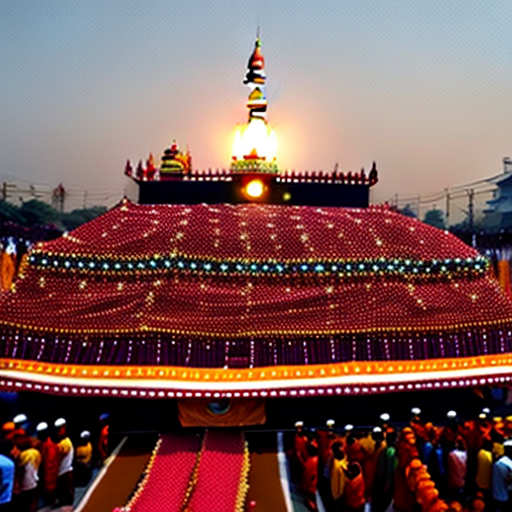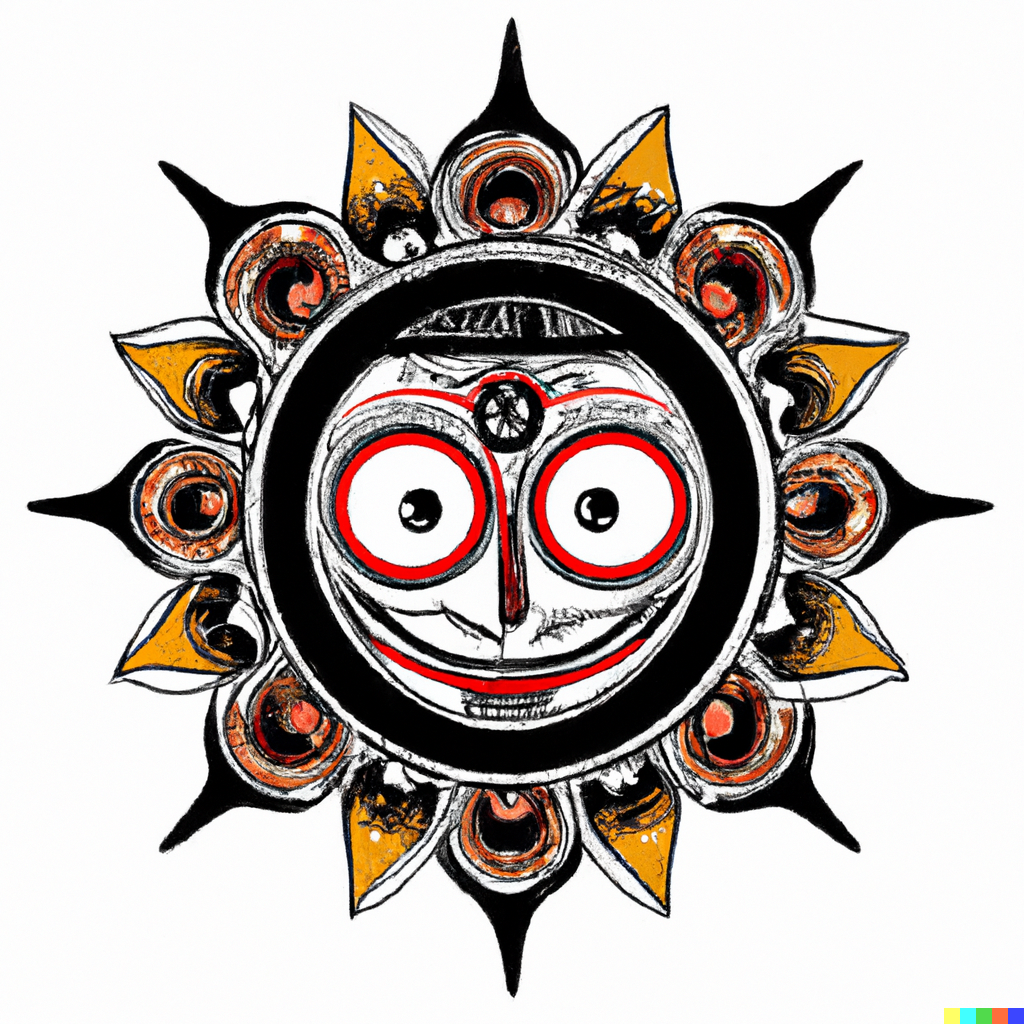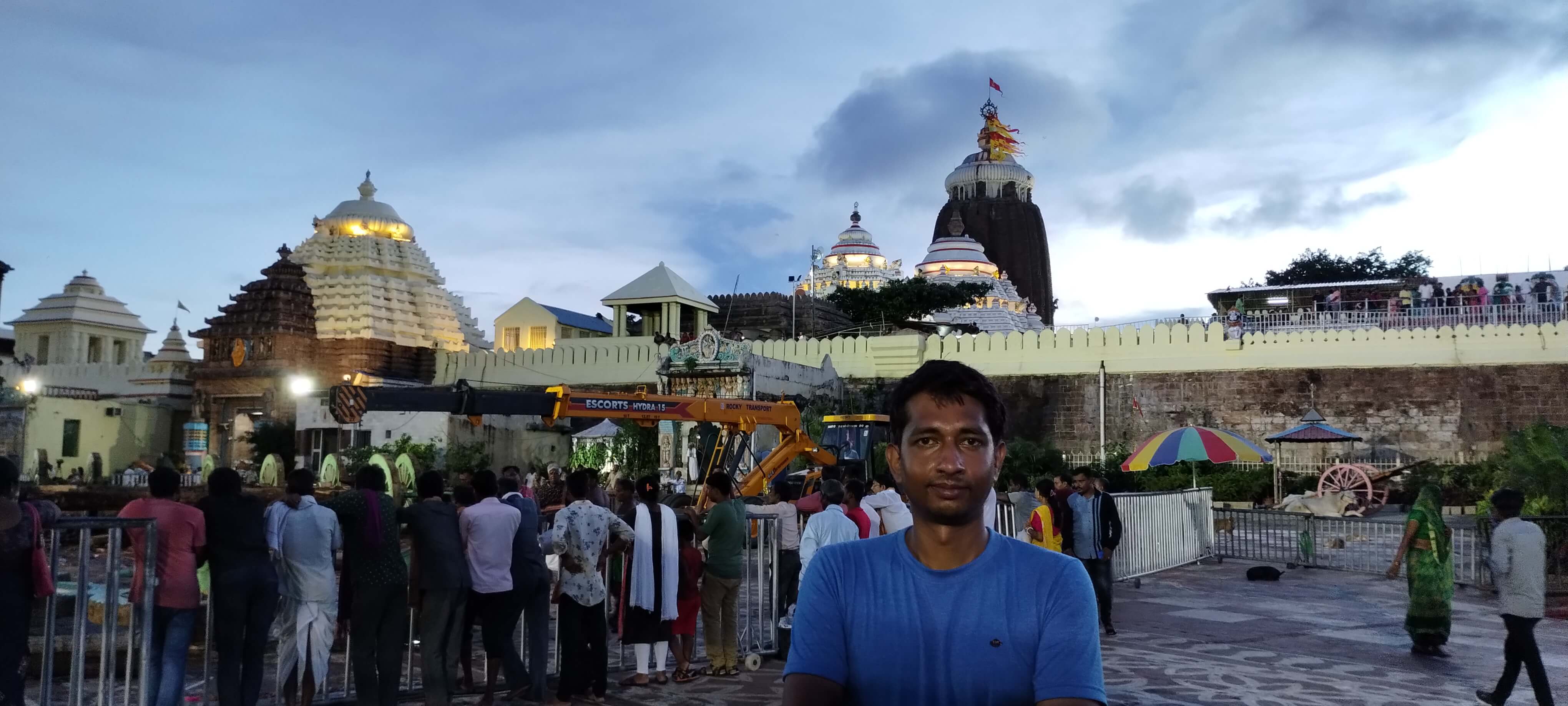Lord Jagannath: Converging Religions & Power Dynamics

Jaggarnaut
I recently came to know about the orgin of the word Jaggarnaut. It is derived from the name of Hindu diety Lord Jagganath. The term gained prominence during the British colonial era in mid-nineteenth century India. British travelers and officials observed the annual Rath Yatra, a grand chariot procession in the city of Puri, Odisha, dedicated to Lord Jagannātha. The enormous and heavily adorned chariots, pulled by devotees, became a captivating spectacle to the Western observers. The word Jagannath is combination of two words, “Jagat” meaning “world” and “nath” meaning “lord” or “master”. Lord Jagganth is a form of Lord Vishnu. However, the term “juggernaut” gradually transformed from its original context and took on a different meaning. It began to be associated with an unstoppable force or an overwhelming power, akin to the massive chariots of Lord Jagannātha. The concept of an unstoppable force rolling forward, regardless of obstacles, was metaphorically linked to the modern usage of “juggernaut.” From its ancient roots in Hindu mythology to its contemporary usage in describing unstoppable forces, the word continues to fascinate and convey a sense of awe-inspiring power.
History and various attack on Puri, Jagganth temple
 According to popular belief, it is said that the iron used in constructing the central deity of the Jagannath Temple, Lord Jagannath, possessed a powerful magnetic force. This force allegedly caused passing ships to experience a magnetic pull that drew them towards the temple, assisting in their navigation to the shore.
According to popular belief, it is said that the iron used in constructing the central deity of the Jagannath Temple, Lord Jagannath, possessed a powerful magnetic force. This force allegedly caused passing ships to experience a magnetic pull that drew them towards the temple, assisting in their navigation to the shore.
Historically, Puri held great prosperity as a port city due to its advantageous location on the Bay of Bengal. The Jagannath Temple served as a crucial religious and economic hub, attracting pilgrims and traders from various parts of the world. The city thrived as a vibrant port, facilitating trade and fostering cultural exchange.
The Jagannath Temple’s immense wealth and mysticism have made it a target of attacks on 18 occasions. Perhaps this is why the present temple authorities maintain a high level of secrecy, which can sometimes create an unwelcoming atmosphere. Foreigners and non-Hindus are prohibited from entering, a form of discrimination that arose after attacks by Islamic invaders. However, it’s worth noting that Kabir, a poet who visited the temple in the 15th century, and Salabeg, a 17th-century Muslim-born poet devoted to Lord Jagannath, have their shrines near the temple. It’s important not to be discouraged if the temple authorities deny entry. There have been instances of malicious acts committed by certain individuals, and the temple staff may display strictness. I advise visitors to be disciplined and adhere to the rules established by the temple authorities.
Out of the 18 attacks on the temple, two were attempted by Hindus, while the remaining 16 were carried out by Islamic invaders. The chronological order of these attacks is as follows:
- Invasion by “Raktabahu” (800 A.D.)
- Invasion by Illias Shahi (1340 A.D.)
- Invasion by Feroz Shah Tughlaq (1360 A.D.)
- Invasion by Ismail Ghazi (1509 A.D.)
- Invasion by Kalapahada (1568 A.D.)
- Invasion by Suleman and Osha (1592 A.D.)
- Invasion by Mirza Khurram (1601 A.D.)
- Invasion by Hasim Khan (1608 A.D.)
- Invasion by Kesodamaru (1610 A.D.)
- Invasion by Kalyan Mal (1611 A.D.)
- Invasion by Kalyan Mal (1612 A.D.)
- Invasion by Mukarram Khan (1617 A.D.)
- Invasion by Mirza Ahmad Beg (1621 A.D.)
- Invasion by Amir Mutaquad Khan (1645 A.D.)
- Invasion by Amir Fateh Khan (1647 A.D.)
- Invasion by order of Aurangzeb (1692 A.D.)
- Invasion by Muhammad Taqi Khan (1731 A.D. and 1733 A.D.)
- Invasion by followers of Mahima Dharma (1881 A.D.)
The temple is always amidst power struggle. The external as well as internal powers keep fighting for more power. Hence i would advice to follow th e temple rules.
Death of Lord Krishna and Birth of Lord Jaganath
 The legend of Lord Jagannath begins with the demise of Lord Krishna. After the battle of Mahabharata in Kurukshetra, Shri Krishna was resting on a tree branch when a hunter named “Jara Sabar” accidentally shot an arrow into his leg. It is believed that Jara Sabar was the reincarnation of Vaali, who was previously killed by Lord Rama in the Treta Yuga. Both Lord Rama and Lord Krishna are considered incarnations of Lord Vishnu. Lord Rama belonged to the Treta Yuga (12209 BCE), while Lord Krishna belonged to the Dvapara Yuga (5561 BCE). According to the legend, Lord Rama had granted a boon to the dying Vaali that he would be killed by Lord Rama in the Dwapara Yuga.
The legend of Lord Jagannath begins with the demise of Lord Krishna. After the battle of Mahabharata in Kurukshetra, Shri Krishna was resting on a tree branch when a hunter named “Jara Sabar” accidentally shot an arrow into his leg. It is believed that Jara Sabar was the reincarnation of Vaali, who was previously killed by Lord Rama in the Treta Yuga. Both Lord Rama and Lord Krishna are considered incarnations of Lord Vishnu. Lord Rama belonged to the Treta Yuga (12209 BCE), while Lord Krishna belonged to the Dvapara Yuga (5561 BCE). According to the legend, Lord Rama had granted a boon to the dying Vaali that he would be killed by Lord Rama in the Dwapara Yuga.
Story of mystical object “Bhrama” placed in Jagganth temple
 After Lord Krishna’s cremation, it is believed that his heart remained unconsumed by the fire. Arjuna then tied the heart to a log and cast it into the ocean. A tribal man named Biswabasu discovered the blue stone and installed it in a Vishnu temple. King Indrayamna, curious about the stone that was attracting pilgrims to the Nilgiri mountains, sent his royal priest, Vidyapati, to gather information. Accompanied by a few trustworthy guards, Vidyapati traveled to the temple and met Biswabasu, informing him of the king’s sincere intention to build a temple for the deity. After getting a glimpse of the deity, Vidyapati returned to the kingdom. The king eagerly received Vidyapati and requested a description of the deity. He then planned to see the deity himself. On an auspicious day, the king journeyed to the mountain but learned that a natural disaster had caused the deity to be submerged underground.
After Lord Krishna’s cremation, it is believed that his heart remained unconsumed by the fire. Arjuna then tied the heart to a log and cast it into the ocean. A tribal man named Biswabasu discovered the blue stone and installed it in a Vishnu temple. King Indrayamna, curious about the stone that was attracting pilgrims to the Nilgiri mountains, sent his royal priest, Vidyapati, to gather information. Accompanied by a few trustworthy guards, Vidyapati traveled to the temple and met Biswabasu, informing him of the king’s sincere intention to build a temple for the deity. After getting a glimpse of the deity, Vidyapati returned to the kingdom. The king eagerly received Vidyapati and requested a description of the deity. He then planned to see the deity himself. On an auspicious day, the king journeyed to the mountain but learned that a natural disaster had caused the deity to be submerged underground.
To seek Lord Vishnu’s favor and obtain a vision of “Brahma,” the king conducted several Yagyas (sacred rituals). In a dream, he received guidance to construct the deity from a neem tree, with the inclusion of a conch, a discus, a mace, and a lotus (shankha-chakra-gada-padma). Many sculptors attempted to carve the deity from the tree but failed. A mysterious man then appeared and requested to be enclosed in a cave for 21 days, promising to create the exact deity.
On the 15th day, as the king could no longer hear the sounds of work, he opened the cave. The deity was considered complete and has been worshipped in that form to this day. The cave contained three deities (Jagannath, Subhadra, and Balarama) and an object (Sudarshan Chakra). The mysterious blue objects are said to be placed within the wooden sculptures.
Some accounts suggest that the blue objects vibrate and cannot be viewed with the naked eye. This is why the entire city of Puri is kept in darkness during the Rath Yatra festival. The priest, blindfolded, transfers the blue objects from the old sculpture to the new one.
Whatever the truth may be, the existence of the deity has attracted the attention of powerful individuals seeking to gain more power. Nevertheless, it has managed to remain within the temple’s premises.
Delicacies
 The cooking methods used in the temple today remain unchanged for thousands of years. The temple administration is tightly controlled by specific individuals who are entrusted with specific tasks that are passed down through their families. The art of cooking is also a skill that is inherited through generations. The exact process of preparation is not widely known, but it is believed that the vessels are stacked on top of each other, with the food in the topmost vessel cooking first.
The cooking methods used in the temple today remain unchanged for thousands of years. The temple administration is tightly controlled by specific individuals who are entrusted with specific tasks that are passed down through their families. The art of cooking is also a skill that is inherited through generations. The exact process of preparation is not widely known, but it is believed that the vessels are stacked on top of each other, with the food in the topmost vessel cooking first.
The origin of Rasgulla (Rosogula) is also connected to Lord Jagannath. According to legend, when Subhadra became upset with Lord Jagannath, Rasgullas were created to appease her. Niladri Bije, which is celebrated on the final day of the Rath Yatra, includes the serving of Rasgullas.
Other mysteries:
- The temple flag The flag hoisted on the top of the temple always moves in the oppsite direction of the wind
- The neel chakra
The neel charka always appears to be directed towards the viewer
- Shadow of the temple tomb The design of the temple tomb is such that its shadow isn’t observable
- Sound from the sea. Despite being close to the beach, there is no sound of the sea inside the temple
- Reverse flow of wind The wind flows from temple directio into ocean in the day and from sea to the temple in the evening which is opposite ot the norm.
- The Rath Yatra It is said that the Lord Jagannath takes Sister Sudharbha and brother Baladeva for a tour.
Conclusion:
The Legend of Lord Jagannath states that it encompasses numerous stories and various interpretations. Lord Jagannath is a Hindu deity, and the temple is managed by the Vaishnav sect, which worships Lord Vishnu. Some of the stories are derived from the Puranas, while others have been documented by Odia poets and historians.
Puri, an ancient city, has historically been a center of power struggles. The Jagannath temple symbolizes the Vaishnav tradition, which captivates the interest of tribals. The city, through its traditions, has preserved craftsmanship and engineering skills that contributed to the construction of several navies. The influence of these traditions can be observed even in cultures and traditions as far as Vietnam.
In 486 BC, Shankracharya declared Puri as one of the four important pilgrimage sites for Vaishnavs seeking moksha (salvation), along with Badrinath, Dwarka, and Rameshwaram. This pilgrimage is also known as Char Dham Yatra.
However, the esoteric nature of Lord Jagannath allows for connections with other Hindu sects, including Jainism, Buddhism, and Shaivism. Particularly, those who follow the advaita philosophy can find correlations with Lord Jagannath.
According to one interpretation, Lord Jagannath’s round face represents the universe, while his big eyes are said to watch over it. Another interpretation from the Puranas suggests that Lord Jagannath’s expression reflects the intense feelings of spiritual ecstasy experienced by Lord Krishna, particularly in the mood of separation from a loved one.
There are several Buddhist monasteries and sites surrounding the temple, as both traditions interpret them as representing the void. In Buddhist practice, reaching the void is the ultimate goal, as they do not believe in a heaven.
Since I personally resonate with the advaita philosophy, I prefer to interpret Lord Jagannath’s symbolism as representing the formless and boundless nature of the divine. This concept is also found in references to Lord Krishna in the Bhagavad Gita and Lord Rama in the Ramcharitmanas. The Bhagavad Gita holds higher precedence for spiritual practice, as it provides guidance rather than presenting stories like the Puranas. Lord Jagannath’s appearance is carefully crafted so that he can be seen from a great distance, attracting a larger audience.
It is impossible to fit all the stories of Lord Jagannath in a blog. There are thousands of stories in which people describle miracles in their lives. There is rich literature around him in Odisha. I got an opportunity to travel last year, i hope he calls me again.
Jai Jagannath!

References:
https://magazines.odisha.gov.in/Orissareview/2011/july/engpdf/82-89.pdf